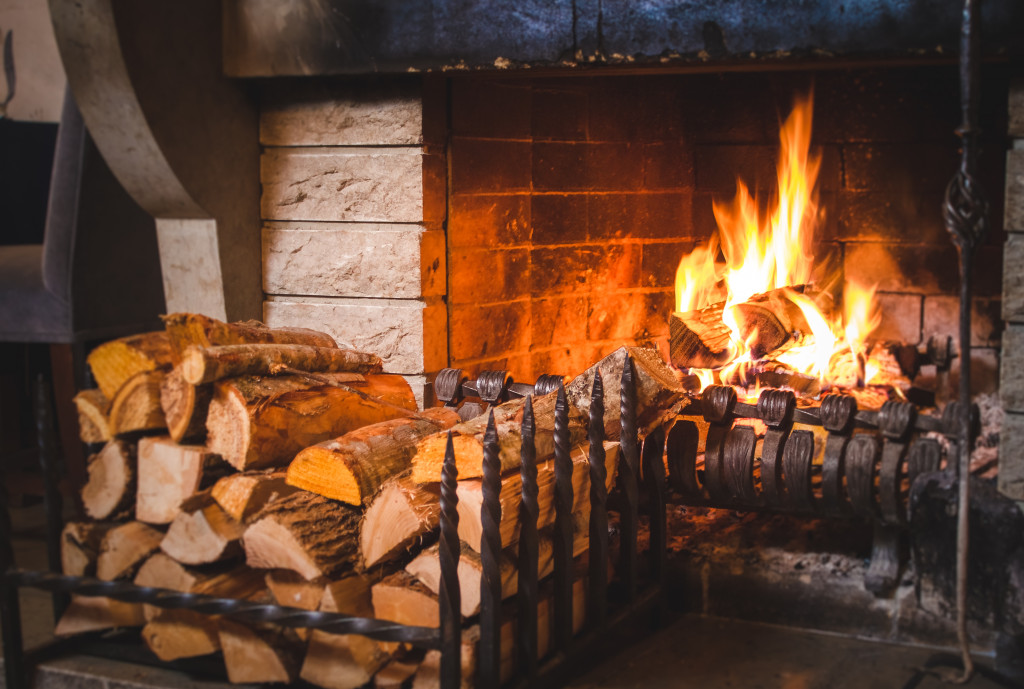Now that you’re staying home for longer periods, your energy bills have surely increased. As we approach cool seasons again, let’s see what would happen to your bill with a fireplace vs. a furnace.
Both heating systems are popular in the States. Many people may think fireplaces are outdated, but a lot of contemporary homes still have them. Only instead of a traditional fireplace, they use a much more modern gas fireplace. Furnaces, on the other hand, are widely used for their low-maintenance quality and energy efficiency.
That doesn’t mean you can’t save energy with a fireplace, though. So what makes a furnace different?
Energy Efficiency
A traditional wood-burning fireplace is the least energy-efficient heating system. Only 15% of wood’s energy is converted into heat. Thankfully, modern wood-burning fireplaces came to be. It’s significantly more energy-efficient, achieving ratings of 75% or more.
If you still have your old wood fireplace, install a glass door to its facade. The glass will limit the amount of room air that’s sucked into the fireplace during combustion. As a result, your chimney won’t suck most of your home’s heated air.
However, glass doors work best when the fire is burning down for the night with the damper open. Otherwise, they block radiant heat, so they must be open when the fire is blazing.
A gas fireplace is a bit more energy efficient. A type with two-way vents that supply outside air for combustion has energy efficiency ratings of up to 77%. It’s a greener choice compared to top gas fireplaces connected to a chimney. Plus, its streamlined appearance fits many contemporary and even traditional homes.
A furnace, on the other hand, outranks both wood and gas fireplaces in energy efficiency. Standard furnaces today are 80% efficient. You’d even find some with a 90% rating, which is considered high-efficiency furnaces.
Hence, if you prioritize value-for-money over aesthetics, go for a furnace heater. A reputable heating system contractor will provide you with options on the best brands within your budget. If you still prefer a fireplace, choose the most energy-efficient type, and be sure that you can keep up with its maintenance.

Maintenance
Speaking of maintenance, a fireplace and a furnace have vastly different upkeep requirements. A wood-burning fireplace is the most high-maintenance type. It requires a chimney, and each time you light the fireplace, you’d have to deal with smoke. Afterward, you’d have to clean up the ash. The chimney also requires inspection now and then.
Gas-list fireplaces are easier to maintain. They don’t need a chimney, just a vent that connects to your roof or external wall. And when you light the fireplace up, you won’t be dealing with a bothersome cleanup afterward.
A furnace, being a part of an HVAC system, is of course the most low-maintenance out of the three. First of all, it only requires a tune-up once a year. An HVAC technician will check the machine, ensuring that it’s in good working order before the cold weather. You don’t have to do the heavy cleanup yourself. Just replace the air filters as often as needed, and you’d have a clean and clog-free furnace all year round.
Another maintenance requirement is to regularly check for leaky air ducts. Turn on the heater and feel around ductwork in your basement and attic. If you find a leak, patch it up with aluminum tape. The only time to call a pro is if the ductwork’s condition has become poor.
Costs
As of 2021, the costs of a wood-burning fireplace ranges from $1,900 to $3,300, installation included. A gas fireplace costs $2,300 to $4,000, installation included as well. If you’d build your fireplace, expect to shell out around $1,050 for a low-end type, $2,415 for an average type, and $3,780 for a high-end type.
It’s money well-spent if you really love the ambiance a fireplace adds to your home. What’s more, real estate agents say fireplaces add between $1,000 and $4,000 to your home’s value.
An electric furnace usually costs between$1,600 and $6,200, installation included. The huge gap between the prices shows that you have a wide variety of options in brand, design, features, etc. And whatever the price you pay, it’s money well-spent too, as electric furnaces typically last 20 to 30 years.
And of course, since furnaces save more energy, your cost-savings will immediately reflect on your heating bill. However, you have to follow the recommended thermostat settings for you to save big bucks. Also, don’t block the vents with furniture, drapes, or any other obstruction. To get its maximum benefits without increasing your bill, let the heated air flow freely.
Those are the key differences between a fireplace and a furnace. As you have seen, both have outstanding qualities and benefits, but a furnace wins by a small margin.
